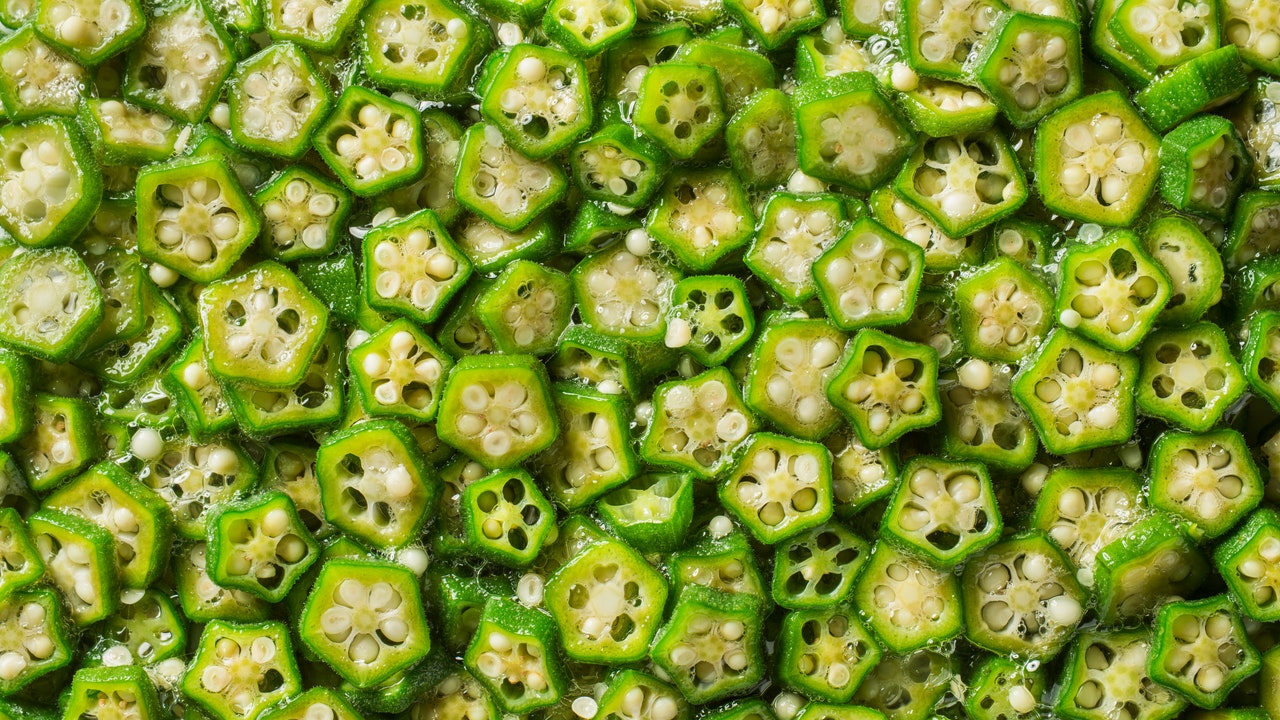It’s never been easier (or tastier) to cook vegan, even if you’re not doing it full-time. In Part-Time Plant-Based, associate cooking editor Antara Sinha brings you bright ideas from veggie-forward cookbooks.
Peruse the internet for okra wisdom and article after article will claim to help you do one thing and one thing only: Cook it completely slime-free. But let’s be real. If you’ve ever sliced okra, you know this is a near-impossible feat. No matter how carefully you leave okra undisturbed in the pan, or how many vinegar soaks you put okra through, it’s still going to get a little slimy.
Slime is just a fact of life when it comes to oft-maligned okra—like pith on an orange, or hairs on a raspberry—and “people either like it or they don’t like it,” says Nik Sharma, author of Veg-Table: Recipes, Techniques, and Plant Science for Big-Flavored, Vegetable-Focused Meals. By embracing the texture, and with some smart cooking, you can be firmly in the “like it” camp. It’s time to work with the slime, and not against it. Here’s how to get started.
What is okra slime?
Okra slime is made up of a type of sugar—a soluble fiber, if we’re getting specific. What we call slime is actually called mucilage (sorry) in the plant world, similar to the jelly of aloe or nopal. You’re more likely to see it after okra pods have been cut and exposed to moisture.
“Water draws out the mucilaginous substance, and pieces of okra might end up sticking to your knife and cutting board,” writes Sharma in Veg-Table. “The more water they meet, the stickier they get.” So to make your prep as easy as possible, give whole okra a thorough pat dry with a kitchen towel before you start slicing.
Work with the slime, not against it
“When added to curries, gravies, and stews,” Sharma continues, “this substance is a boon because it helps thicken the liquid.”
Whether it’s the only thickening agent depends on the dish. For a pot of gumbo, for example, you’re still going to need to make a roux for that stew-y viscosity that gumbo is known and loved for. But for veggie stews that need just a touch of body to cling to rice or to scoop up with roti, like in this Curry Vegetables recipe, okra slices are a stellar thickener. Both fresh, peak-season okra and the frozen, pre-sliced bags from the supermarket can do the trick.
Another reason to love the slime: It’s actually key to the crispiest okra. “The mucilage is basically a carbohydrate—it dehydrates and forms a nice crust on top,” says Sharma. “It adds crunchiness.”
Those carbohydrates help to create that caramelized, crackly okra skin on dishes like this Bhindi Ki Sabzi. Giving it a little agitation in the pan to bring out some of the stickiness, then leaving it undisturbed until it crisps up is the key to that even browning.
Source link









